Advice and Tips For First-Time Visitors to Cape Town
This article is about Cape Town Travel Tours Hotels and Top Travel Tips. Things to do, best time to go, must see and do attractions and tours.
I have been to Cape Town about 5 times now and it definitely one of the most favourite places I have to visit. And although I usually prefer to go to new places and see new things, Cape Town is a place I like to go back to. And always have a great time.
In 2005, I had made it my “Tips for Travellers Destination of the Year”. And although that sounds quite pompous, I have been back since and definitely feel it is very special. I did a podcast in 2005 about the city, and this is an update with new perspectives and new ideas as the city is changing and developing.
I have updated with more recent information and more tips, many of which are about getting to see some of the great things just outside the city.
Cape Town. What is it and why is it so important?
Cape Town, as you know is on the very southern tip of Africa, and is one of the administrative capital cities of the country of South Africa. They alternate the meeting of Parliament between Cape Town and the official capital city of Pretoria. Johannesburg is probably one of the best known cities and is also the biggest in South Africa. Many people actually think that’s the capital. While Johannesburg is the largest city, it’s also where the major financial activity takes place where all the gold wealth is.
South Africa is made up of a number of what used to be independent states and so each of them had a capital. When it became one nation, Cape Town and Pretoria became the two administrative capitals, one originally more English (Cape Town) and one more Afrikaans (Pretoria).
Cape Town is just stunning. As I mentioned, it’s right down there on the coast and it has its famous iconic symbol of Table Mountain. The city really sort of nestles between the Table Mountain and the coast.
Huge amount to do
There’s lots of amazing restaurants. The choice and variety is vast. The city is a real foodie lover idea of heaven. There’s lots of amazing places to stay. It’s very, very funky and trendy as Cape Town is also where a lot of the creative industries are particularly, film making. A lot of films, particularly commercials, are made by European companies there now. So there is a whole kind of vibrant creative thing going on around the city.
There is a huge amount to do no matter your interests. They range from Table Mountain, the Victoria & Alfred Center, Robben Island, Cape Point, Simon’s Town and the penguins (yes penguins), beaches, and so much more. I will come to these later.
But let’s talk a little bit about some of the downsides of Cape Town, or less glamorous side of Cape Town first and then we’ll get back to the positives.
I’ve already mentioned it’s a very beautiful place. It has beautiful beaches, beautiful scenery, beautiful people, beautiful architecture, lots of interesting architecture dating from its early settler days with English and Dutch influences through to modern funky, trendy guest houses and hotels.
But that’s all within the area of Cape Town that nestles between the famous and iconic Table Mountain and the beaches. When you land in Cape Town and you journey from the airport into town you pass miles and miles of shanty towns where a lot of the black population live. There’s rows and rows of little shanty towns made of iron and other bits and pieces. And obviously quite a lot of poverty there.
There are also lots of people walking in the streets and lots of buses. Although within South Africa the apartheid system ended quite some time ago, there’s still feels and looks to be quite a big division between the haves and the have not’s. Particularly in Cape Town, it seems to still be very much split on racial lines, unlike my experiences in Johannesburg for example. It’s not completely, but there’s still a fair amount of that.
So you travel pass all of these shanty town areas and then you eventually enter into the city of Cape Town. You feel like you are entering a completely different world. It’s very European like. It feels like you are in Spain or somewhere Mediterranean like.
Although it seems to be changing, in all the restaurants there seems to be mostly white students working there. It’s a little bit strange when you consider all the political changes within South Africa. But it is, without a shadow of doubt an absolutely stunningly beautiful place, and you do feel things are changing. But it feels at a slower pace than one would have expected.
The city used to have a reputation for crime, and at one stage had a murder rate of the scale per thousand close to places like Mexico. A lot of the crime was in the various townships and suburbs which had been racially divided in the apartheid days. I have to say that it has felt safer each time I have been. I am not sure if this is through being more familiar with the city, but talking to locals they too feel the same, and feel a lot has been done to bring down crime.
You do still have to be cautious and you are encouraged to drive with care doors locked, at night not to stop and be very aware of where you go. They have guys who will stand guard of your car when you park it, and these are now regulated and you pay them a tip and they ensure your car is safe.
Cape Town used to be a fairly cheap place to be, and once you are there if from Europe or USA then the exchange rate makes eating and shopping quite reasonable. But as it is far from both, the flights are quite expensive and also internal flights seem expensive (though of course the distances are vast).
So what are my tips for travellers to Cape Town?
Best time to visit
As Cape Town is in the Southern hemisphere at the very, very southern tip of Africa, the best time of the year to visit is in their summer which runs from about August/ September time through to about March/ April time.
I’ve visited Cape Town in both March and December, and both times have been great nice weather there. It’s also not the peak season. The peak season in Cape Town is Christmas time which is the middle of summer. It’s a very, very popular time for both international and local South Africans to vacation in and so tends to be more expensive or accommodation, and is harder to get into restaurants – but on the plus side it is beautiful weather and very buzzing.
Getting there and around
Cape Town is a good 11 to 12 hour flight from most of the major cities in Europe. Much further off if you’re coming from the U.S.A of course. Many European airlines fly direct to the city. If you can it is worth doing as from Johannesburg it is over a 2 hour flight alone, and internal flights are quite costly. It is not worth driving from Johannesburg as the drive is very long indeed, and not very scenic or interesting.
One great way to get to Cape Town, if you are in the Johannesburg/ Pretoria area, and have a lot of cash, is to get either the Blue Train or Rovos Rail. These are luxury trains and very expensive, but also quite an experience. For Rovos Rail I have a podcast and blog posting about and takes 2 nights. Blue Train run by South African Rail take one night. You get to see amazing scenery at parts, and quite an experience for the rest.
It is a good idea to hire a car. They drive on same side as UK and it is easy to find your way around – and of course these days with SatNav everywhere is. There are all the usual car rental services, and their desks are just as you come out of the customs area at the airport. I also recommend a car as you will see there are many great places around the outskirts and hour or so drive really worth getting to.
There are many private mini bus taxi services, but they are hectic, packed and a bit crazy.
Where to stay
Hotels are relatively expensive for foreign tourists. One of the big, blossoming things in Cape Town which I highly recommend is the guest house market. Many people have turned these very beautiful, old Colonial, Cape Dutch style houses, in various parts of town, into guest houses. And they’re beautifully very trendy, just really amazing. And very cost effective.
And I would encourage you, if you go to Cape Town, to perhaps not look so much on Expedia or Travelocity and look at hotels, but actually look for guest houses on Tripadvisor.com or sites like cape town.org and cape town.net.
We stay at Derwent House (which is usually #1 or #2 on Tripadvisor.com) and on the blog is a review, photos and video. Or visit my YouTube channel (tipsfortravellers) and take a look. The 2 ex-UK ladies and their team run a fantastic place and great location.
Table Mountain
Table Mountain is what makes Cape Town instantly recognisable and is what the city is best known for.
It is certainly very impressive and creates a wonderful backdrop to the city. They have done a pretty good job at protecting the natural beauty of the mountain.
It is a huge mountain, which is why fairly few people had ever been to the top until the 1920s because you really have to be quite fit to climb up it. This changed when, finally on the 1920s a Norwegian guy, Trygve Tromsoe, had an idea to build a cable way, a cable car, and eventually raised money. In October 1929, it opened.
The cable car is now become a must-do. Everybody who’s ever been there, famous people, from Queen Elizabeth II or Oprah Winfrey or Arnold Schwarzenegger, anybody who’s been, basically, to Cape Town has gone up this cable car.
Today, there is a very efficient cable car than runs from 8am until as late as 10pm in the peak summer season. It carries about 40 or more and 900 people can go up or down in an hour. Saying that, it is still best to get there early or you can wait for up to 2 hours as some people did to get up and then down over the Christmas peak time.
On the blog and YouTube I have a video of the ride.
The cable car ride is quite something, with the floor rotating so everyone gets a good view. It is quite amazing and for those that are not so keen on heights it can be a bit scary, but it looks and feels much better in the car than watching it going up!
At the top of the mountain there are paths laid out and to protect the park you have to stay on them. There can be some crime on the mountain as people target tourists, and so you are also asked to stick to the paths and where people are.
There is also a restaurant and gift shop, though not especially good ones to be honest.
The top of the mountain is often in clouds and so people tend to wait for clear days before going up, but although you miss the amazing views of a clear day even on a cloudy day it is an experience and clouds move fast giving glimpses to the views below. If it gets windy they close the mountain and the cable cars, issuing a loud warning siren to ask you to head off the mountain.
It is a real must do, but go early!
And even on hot days take something as can be much cooler at the top.
Signal Hill
Although Table Mountain is the best known mountain in Cape Town for people to go up for views of the city and surrounds, there is another amazing vantage point that many never get to go to – and this is Signal Hill.
Unlike Table Mountain which requires a long trek on foot or a cable car ride that is not for anyone that does not like heights, you can drive up Signal Hill.
Signal Hill is very popular on tours and for locals to head up to have a glass of wine and watch the sun go down. But it is really very breathtaking both in the day and even more so at night. You can see Cape Town stretching out in a glistening array of light. It is very stunning indeed.
This large mountain got the name as it was used to signal to ships out at sea about coming into Port, and later was then used to fire a cannon at noon so ships could set their navigation clocks. And still today the cannon is fired daily. In years past if the cannon was fired up to 3 times it would signal that a ship was in trouble or had wrecked and people could prepare to look for survivors (and cargo washed up!).
The drive down the hill is a bit scary for those who do not like heights as you are right on the side of a huge drop, but is really worth a trip up there. Do it twice, once in the day and then at night. If you only do it once, do it at night!
Robben Island
This is probably the most emotional day out I have ever had.
It is an essential part of your trip as such a key part of South African History, and the place Nelson Mandela spent most of his 25 year in prison on.
At the V&A shopping area on the seafront is where the Robben Island Embarkation Building is.
Robben Island is about 10 or 12 miles out from Cape Town, in the middle of the bay. It has a very long history, not all very pleasant. For about 400 years it had always been used as a place where exiled and outcast people were put, such as lepers. But it’s probably best known as where, during the years of apartheid, the government put all the political prisoners. So people like Nelson Mandela spent around about 25 years there.
It’s about a four hour round trip. You catch a catamaran, which takes about 30 minutes, out to Robben Island. Once you get there, an ex political prisoner who was incarcerated there shows you around. Before going to the prison, they take you all around the whole island, including where the guards and their families to live.
You also visit the lime pit quarry, where the political prisoners used to work, and explain how people like Nelson Mandela used to go there day after day and work in this blazing heat. Then they take you to the prison to see the cells where men were held for. It is quite shocking the tiny cells that was home or many for up to 25 or so years.
In each cell there is a little box on the wall which has one personal item that the prisoner who occupied that cell for a quarter of a century left or gave to be used. So it may be a comb. It may be a card. Some have recorded a short audio, talking about their time there. On each of the cells, there is a little laminated card, where there’s a picture of the prisoner and their story, and it’s just heartbreaking.
They then show you around, the workout area, the dining rooms, the dormitories, and they tell you their own story. It’s really just the most amazing experience, and it really is something that you just absolutely have to do. One of the things that surprised me, actually, is a lot of people who live in South Africa and live in Cape Town don’t seem to have been in there. Maybe that’s just because they’re trying to move on and they don’t want to go back and revisit the past.
But it just was one of the emotional days I’ve ever had. The sad thing is many of these prisoners are returning to the place to work as they have struggled to work and survive after being released.
Kirstenbosch Botanical Gardens
I had been to Cape Town 4 times in the last 10 years and had never visited the Kirstenbosch Gardens, despite it being recommended to me many times.
It seemed to me to be a really dull day out to go and visit a botanical garden. But today we decided to actually go and do it – and it turned out to be a very beautiful and breathtaking morning out.
The gardens were established in 1913 to protect and conserve indigenous plant life and is massive, around 528 hectares. The reason they are so much better than many gardens of the type around the world is the backdrop of the quite magnificent mountains that they nestle under.
The gardens are very lush indeed, and one thing you notice as you drive around the famous Cape Town Table Mountain on the sea side is how lush the territory gets. I assume this is some geographical thing I should have known, but it is really quite remarkable how on the one side it is very dry and the other so lush.
The gardens are framed by what I assume are the Twelve Apostles part of the mountains and make for breathtaking images and great pictures.
I am not a plant buff and so did not dwell on what the various sections were, other than to enjoy the very different ways they had been laid out and planned. All were very different and interesting. So even as non plant buff there was constant changing things to keep your interest, like babbling brooks, art exhibitions and sculptures, aromatic plant walkways to stimulate the senses and all while guinea fowl and other birds popped by.
In the huge grounds they hold concerts which must be great fun.
There is also a very large gift shop with really good breadth of goods, books and sculptures. Not full of usual tourist junk.
Well worth a visit! I can see why the car park was so full!
Beaches
The beaches Cape Town are amazing. Clifton Beach and Camps Bay are the most popular.
There are four beaches in Clifton. Clifton is rated by the travel segment on the Discovery Channel as one of the best beaches in the world. It is really beautiful. The beautiful people go there. The water’s freezing cold, because it’s the Atlantic. I cannot stress how freezing cold, and so very few people swim. Only once did I ever go into the sea (for a bet).
To get to Clifton Beach, you walk down some cliff steps. All around are stunning mansions and apartment blocks. It is also the place to be seen and watch the beautiful people. A lot of people prefer to go a little bit further down to Camps Bay, which is just a little drive down the way and less showy.
Kloof Street
Cape Town seems to always be evolving and changing. This is especially true when it comes to places to eat and go out to. It seems that Cape Town is a very social place to live in, and people seem to go out to eat a great deal.
As parts of the city get taken over by the tourist trade, it seems that new areas and places open up for the locals to enjoy. Kloof Street in the Tamboerskloof part of town at the base of Table Mountain is one of these.
This steep street has many beautiful old style buildings, which in their day will have been huge houses over 2 levels with stunning views. Today they have become a series of restaurants and bars with great diversity.
They range from take away pizza joints through Thai and Vietnamese to healthy eating to Italian.
The street is very buzzing both during the day when the cafes and healthy eating places are busy with people catching up, and in the evening it is packed with young crowds. There is a real sense of community and is more dominated by locals than tourists who have yet to discover the area.
We spent evenings here as we found the restaurants more efficient and more passionate than many of the better known and tourist trade focused places. The latter not really having to worry about repeat custom. We also found the owners and managers more involved and friendly in the Kloof Street places.
It is a fun and vibrant part of Cape Town and great to stroll about –and to eat in.
Cape Point
A drive from Cape Town down to Cape Point, the most South Westerly point in Africa, is a real must.
The drive down to Cape Point takes you along the coast mostly and you drive past quaint towns with gorgeous beaches and incredible views. The road for most of the way is between the mountains and sea. It takes about an hour and half.
This is a full day trip and best to set off early and head straight to Cape Point as traffic to get there in busy times of the year can be really bad, and slow.
It costs around 60 rand each to get into the Cape Point Park and then is about 6 miles to Cape Point itself. There are many walks and other parts to go to, like the actual Cape of Good Hope. The first person to ever sail around the cape was a Portuguese explorer called Bartolomeu Dias, right back in 1488. He actually named it the Cape of Storms because it was so violent and so many storms as this is where the Indian and Atlantic Oceans meet and come crashing together. King John of Portugal later renamed it the Cape of Good Hope, which is what it is know of today.
There are, though, monuments with white crosses dotted at points by the edges of the cliffs that mark where ships were wrecked by the treacherous seas and rocks. The sea is very dangerous and perilous around here and many ships have been wrecked. So Dias probably had the more accurate name.
At Cape Point is a famous lighthouse built right high up on the cliffs in around 1860 or so. In its day the light could be seen 60 kilometres out to sea. But as it was often surrounded by clouds/ mist it was no longer used after the sinking of the Lusitania in 1909 and one built lower down.
You can walk up the steep hill or catch a funicular railway up to near the top and climb up to the old lighthouse.
The views are just staggering as it is high on cliffs and the sea is a gorgeous green. Birds sit on the cliffs and it is all just amazing. Despite all the people it feels incredibly peaceful up there.
You’re right at the end of Africa, although, strictly speaking, the real end is a little bit further down the coast. But you’re on what’s generally viewed to be the southernmost point of Africa. This is also supposed to be more breathtaking and wild than the real end point!
There is also a walk called the lighthouse keepers walk that takes you along a narrow cliff top further out to huge cliffs above the sea. You need to be fit and it takes about 1.5 hours.
Cape Point is a must do. On the drive there, you will most likely come across Baboons on the road. But watch out for them as they are very cheeky, and after your food if you have any. On the way back stop to see the Penguin Colony at Boulders Bay, stop in Simonstown (the South African Naval Base) and then in the very colonial looking and slightly hippy town of Kalk Bay.
Simonstown was originally founded in 1743 as a winter anchorage by the first governor of the cape, Simon van der Stel. That’s why it’s known as Simon’s Town.
When British invaded Cape Town, and took over the cape they based the Royal Navy there in 1806. So there has always been a naval base heritage, and in 1957 it became a South African navy base, and today it is still much the center of the South African navy. In fact, when we were there, the navy was having a big Navy Day, and you could actually go and have a look around at various ships.
Boulder’s Rock: Quite nearby there is a huge penguin colony. Usually everyone reacts with, “What? Penguins? But it’s hot in South Africa.” It is hot, but the sea is very cold in the Cape as it is the Atlantic. In face the sea is freezing cold. In Boulder Bay there are what are called jackass penguins, which are the only species of penguin that have ever colonized the African continent. And there’s now over 3,000 of them.
There are raised wooden walkways through the area where you can actually get really, really close to them. Quite a sight!
Kalk Bay
This quaint and fun town is on the way from Cape Town to Cape Point, or if you prefer Boulder Bay (penguins) or Simonstown (Naval Base),
It is a popular holiday town and weekend place to visit, and the main road which runs through the town gets very clogged and slow – and it is very hard to find somewhere to park.
The main part of town is charming and the architecture from its heyday as a weekend and holiday stop reeks of colonial times. Although the buildings could probably do with some investment, they have amazing charm and are now filled with antique shops, restaurants, quirky artwork galleries and jewellery shops. The charm being they are all made by local area artists and so unique.
There is also a distinct hippy feel a lot of the time and you see tarot reading and physics’ shops.
There is a small harbour and there is Harbour House which apparently serves great food along with great views. It was too busy the day we went, but came highly recommended.
It was a great town to wander around and there seems to be loads of guest houses and holiday apartments with great ocean views as it rises fast from sea level up to the mountains.
Handy also for popping along the road to see the penguins.
Other places
Stellenbosh is a popular drive to get into the famous wine area of South Arica!
Francshhoek is also highly recommended as a place for food and wine
|
|

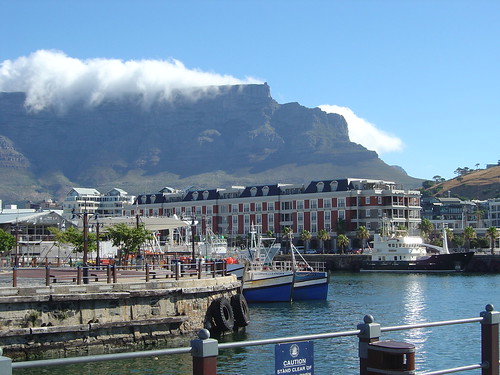


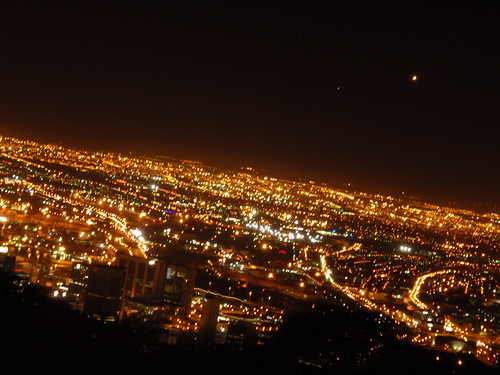
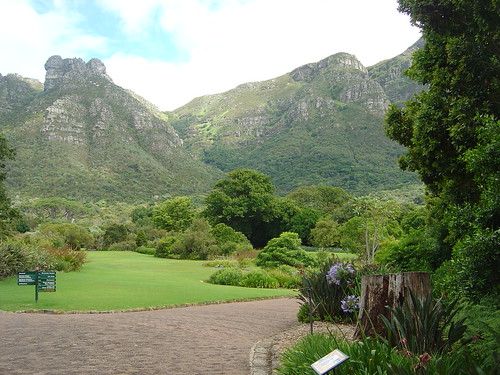

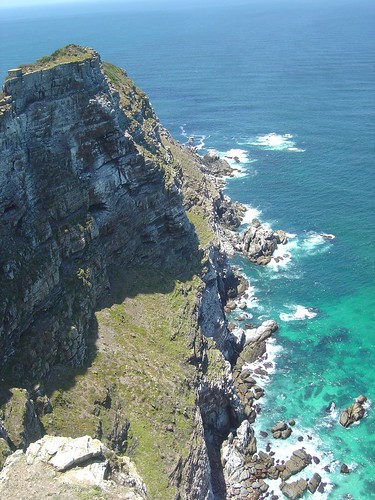
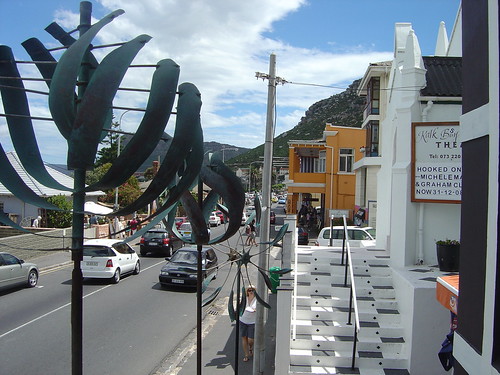

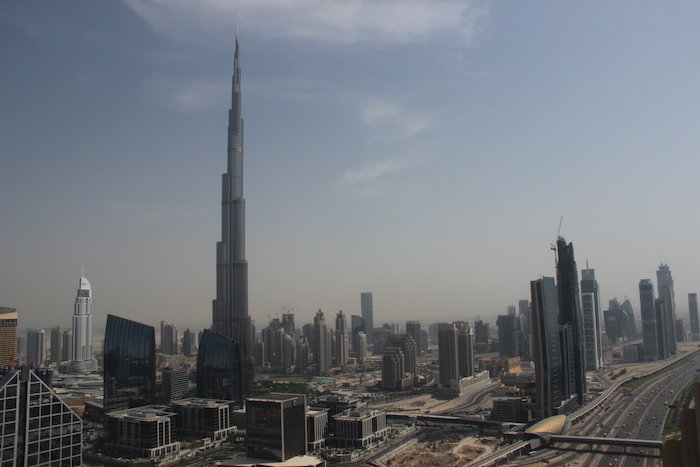
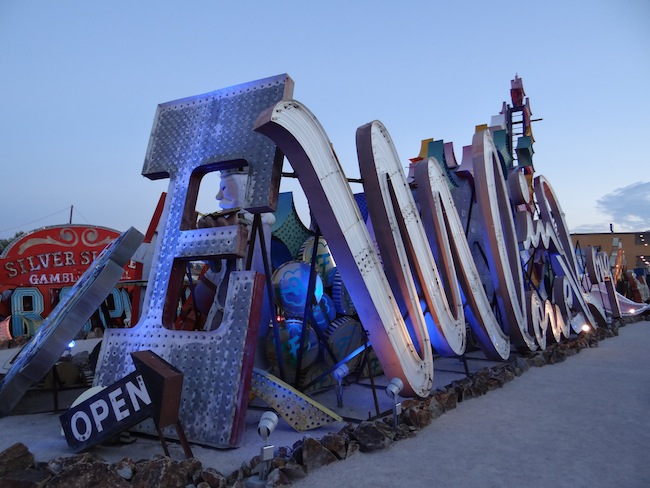
Great article on Cape Town and loved your photos as well. We are Cape Townians and love our home town. You are spot on with your Cape Town accommodation recommendations. One other option is to go for holiday rental homes in Cape Town and the villages you described.
We run a business where we pick and verify all homes before they get added to http://capeholidays.info. And there are other such sites. These sites shares some real bargains and very expensive homes as well.
What is important that you pick accommodation sites where the actual property is verified by an independent third party.